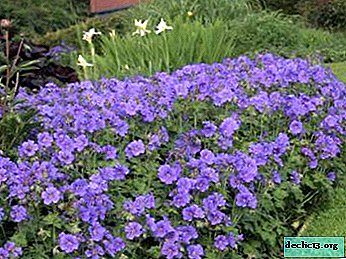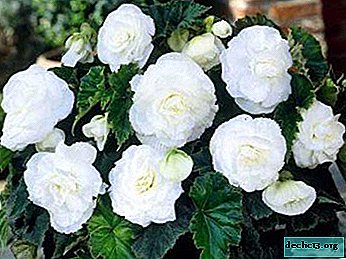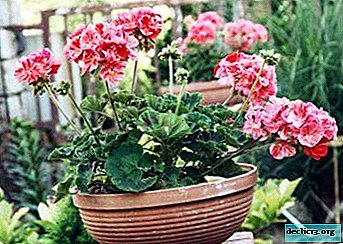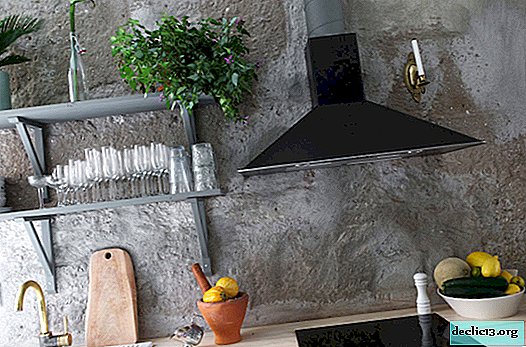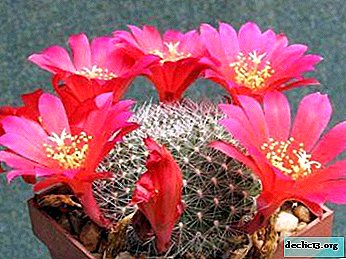Tropical handsome Clerodendrum Prospero: description, photo, nuances of care

In the arsenal of many experienced gardeners there is a wonderful plant, the snow-white flowers of which in their shape resemble a butterfly and exude a pleasant, sweet aroma. This is clerodendrum prospero. From Latin Clerodendrum is translated as "Tree of Fate".
In this article we will talk about proper care for this unusual plant and tell you what pests and diseases of the flower you may encounter, as well as provide visual photos of this unique flower.
Botanical Description and History
Clerodendrum is a genus of tropical deciduous or evergreen trees and shrubs of the Verbena family. Plant species such as herbs and vines are found in the genus. Clerodendrum Prospero is a shrub or miniature tree with hanging shoots. The leaves are glossy, wavy at the edges, lanceolate. Their length is 15 cm. The flowers are collected in long racemose inflorescences, which reach 20 cm in length.
At home, the plant, as a rule, does not exceed 50 cm. The flowers are white, have a greenish cup. Clerodendrum Prospero exudes a pleasant aroma. The homeland of clerodendrum is the mountainous regions of India, South China and Nepal.
Reference! The flower was discovered by the Danish botanist and surgeon Nathanielle Wallich. In the 19th century, he was engaged in the study of Indian flora and was the manager of the Calcutta Botanical Garden.Varieties of varieties and their features
Clenodendrum Prospero is a popular cultivar of Clerodendrum wallichiana, named after Nathanielle Wallich. The shape of the flower resembles a butterfly, with five petals, a swollen cup and has far protruding stamens. In late summer, inflorescences appear on the dangling shoots.. Flowers, up to 3 cm in diameter, bloom gradually over a period of one and a half or two months.
The people of Clerodendrum Prospero are often called the "veil of the bride." This is due to the presence of snow-white flowering inflorescences that resemble a veil. You can also find such names as "Clerodendrum Wallis", "Wollichi". And for a pleasant intense aroma, the flower was called "nodding jasmine."
Photo
Next, you can see a photo of this plant:



Landing
Soil requirements
The soil for the cultivation of Clodendrum Prospero should be fertile. It is best to prepare the substrate yourself. It should include the following components:
- sand - 20%;
- peat - 30%;
- sheet land - 30%;
- clay soil - 20%.
It is allowed to use soil purchased in a specialized store.
Attention! Before planting a clerodendrum, it is recommended to sanitize the soil. This will reduce the risk of plant damage by fungal diseases and pests. It is necessary to disinfect both a self-prepared substrate and a store one.Lighting and location
For the successful cultivation of Clerodendrum Prospero, it is important to correctly determine its location and create a microclimate similar to its natural habitat. Clerodendrum needs good lighting, but you need to protect it from direct sunlight. It can be placed on the windowsill of any side of the house, except the north side. Since the plant comes from the tropics, it needs moist air.
Home Care
So, in addition to creating favorable conditions, Prolero clerodendrum needs proper care. It is as follows:
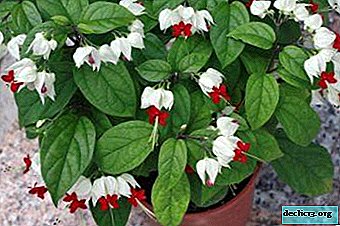 Watering. Clerodendrum Prospero needs abundant watering. However, it is necessary to allow the top soil layer to dry in between watering so that the root system does not rot. Do not allow the complete drying of the soil.
Watering. Clerodendrum Prospero needs abundant watering. However, it is necessary to allow the top soil layer to dry in between watering so that the root system does not rot. Do not allow the complete drying of the soil.In the hot season, daily spraying with water is recommended. In winter, when the air temperature drops and the flower is at rest, the frequency of watering is reduced. It is necessary to water clerodendrum with soft, settled water.
- Top dressing. Feeding is necessary from mid-spring to the end of August. To do this, use complex fertilizers for flowering plants. In winter and autumn, top dressing is not required.
- Pruning. Once a year, it is necessary to trim the clerodendrum. It is carried out, as a rule, at the beginning of the phase of active growth - in the spring. First, cut old weak shoots and dried leaves. This is a kind of plant rejuvenation. After pruning, the plant grows more actively and its appearance becomes more aesthetic. Another pruning is carried out in order to form a crown.
- Transfer. As clerodendrum grows, he needs a transplant into a more spacious pot. Young plants grow more intensively, so they are transplanted, as a rule, once a year in the spring, after pruning. It is enough to transplant older plants 1 time in 2 - 3 years in order to renew the soil.
Common Diseases and Pests
The most common pests that can infect clerodendrum are:
- Whitefly. The pest hides on the underside of the leaves, and leaves a shiny coating on top of them. It is on it that you can find a whitefly.
- Spider mite. A tick can be detected by the presence of a thin web and small dots on the underside of the leaf plate. The pest itself is very small in size.
As a control of these pests, you can use any insecticide, for example, Actellik. One ampoule of the drug is diluted in 1 liter of water and the plant is treated. You can spray up to 4 times, observing an interval of 3 days.
Often clerodendrum affects a disease such as chlorosis. You can recognize it by the yellow spots that appear on the plant. In this case, it is necessary to conduct treatment with a drug containing iron.
Propagation Features
Clerodendrum Prospero propagates in two ways:
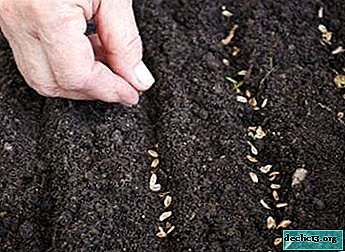 Seeds.
Seeds.- Seeds are sown in specially prepared soil, consisting of turf, sand and peat in late February - early March.
- It is necessary to create greenhouse conditions during this period and ensure timely watering.
- Emerging seedlings in phase 4 of the leaf are transplanted into separate containers.
- After rooting, they are looked after as an adult plant.
- Cuttings.
- In the spring, the shoot is cut from the plant and placed in a container of water.
- After the stem has taken root, it is transplanted into a small pot (not more than 8 cm in diameter).
- Then the pot is covered with a glass flask, watering and airing the planted stalk daily.
- After the appearance of new leaves and shoots, the young clerodendrum should be transplanted into another container, a couple of centimeters more than the previous capacity.
- About a year later, it is required to transplant the plant into a more spacious pot again. And during this year, you should pinch the clerodendrum a couple of times.
Possible problems
The most common problems that can occur when growing Prospero Clodendrum:
- Lack of flowering. Most often, this problem occurs due to improper care. To avoid it, it is necessary to ensure the correct wintering, namely:
- After the next flowering, it is necessary to ensure the air temperature at the level of 12-15 degrees.
- In the cold season, reduce watering, while not allowing the drying of an earthen coma.
- Yellowing leaves. If the plant is not affected by diseases and pests, and its leaves are yellowed, the irrigation regime should be reviewed. In the warm season, a lack of moisture leads to yellowing of the leaves.
- Defeat by Diseases and Pests. If diseases or pests are detected, chemicals are treated.
As you can see, the process of growing Prolero clerodendrum does not seem complicated, but some nuances must be taken into account. Due to its beauty, a marvelous flower is becoming more popular every year and is often grown even by ordinary lovers. Snow-white flowers with falling clusters will decorate any interior and will give a truly wonderful aroma.

 Watering. Clerodendrum Prospero needs abundant watering. However, it is necessary to allow the top soil layer to dry in between watering so that the root system does not rot. Do not allow the complete drying of the soil.
Watering. Clerodendrum Prospero needs abundant watering. However, it is necessary to allow the top soil layer to dry in between watering so that the root system does not rot. Do not allow the complete drying of the soil. Seeds.
Seeds.

